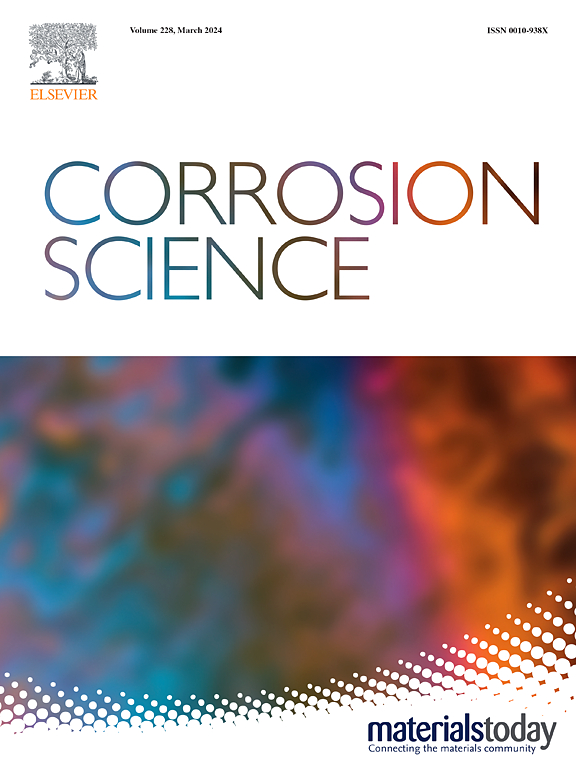Exploring the mechanism of stress-induced passive layer degradation in additively manufactured Ni-Fe-Cr-based alloy 718
IF 7.4
1区 材料科学
Q1 MATERIALS SCIENCE, MULTIDISCIPLINARY
引用次数: 0
Abstract
This study explores the formation and degradation mechanisms of the passive layer on laser powder bed fusion (L-PBF) processed Ni-Fe-Cr-based alloy 718 using high-resolution submicron analysis and microcapillary electrochemical techniques. The findings provide new insights into passive layer breakdown under tensile loading, revealing the influence of microstructural characteristics, dislocation distribution, and mechanical stresses. Tensile loading caused oxide layer cracking near cell boundaries with higher dislocation density. Detachment of the oxide layer from the matrix created voids, allowing aggressive ions to penetrate, promoting crevice corrosion. Cell boundaries remained mostly intact, as metallic particles within the surface oxide layer.
探索添加式制造的镍-铁-铬基 718 合金中应力诱导被动层降解的机理
本研究采用高分辨率亚微米分析和微毛细管电化学技术,探讨了激光粉末床熔化(L-PBF)加工的镍-铁-铬基合金 718 上被动层的形成和降解机制。研究结果为拉伸载荷下的被动层破坏提供了新的见解,揭示了微结构特征、位错分布和机械应力的影响。拉伸加载导致位错密度较高的晶胞边界附近的氧化层开裂。氧化层与基体脱离产生空隙,使侵蚀性离子得以渗透,从而促进缝隙腐蚀。晶胞边界大部分保持完好,表面氧化层中有金属颗粒。
本文章由计算机程序翻译,如有差异,请以英文原文为准。
求助全文
约1分钟内获得全文
求助全文
来源期刊

Corrosion Science
工程技术-材料科学:综合
CiteScore
13.60
自引率
18.10%
发文量
763
审稿时长
46 days
期刊介绍:
Corrosion occurrence and its practical control encompass a vast array of scientific knowledge. Corrosion Science endeavors to serve as the conduit for the exchange of ideas, developments, and research across all facets of this field, encompassing both metallic and non-metallic corrosion. The scope of this international journal is broad and inclusive. Published papers span from highly theoretical inquiries to essentially practical applications, covering diverse areas such as high-temperature oxidation, passivity, anodic oxidation, biochemical corrosion, stress corrosion cracking, and corrosion control mechanisms and methodologies.
This journal publishes original papers and critical reviews across the spectrum of pure and applied corrosion, material degradation, and surface science and engineering. It serves as a crucial link connecting metallurgists, materials scientists, and researchers investigating corrosion and degradation phenomena. Join us in advancing knowledge and understanding in the vital field of corrosion science.
 求助内容:
求助内容: 应助结果提醒方式:
应助结果提醒方式:


